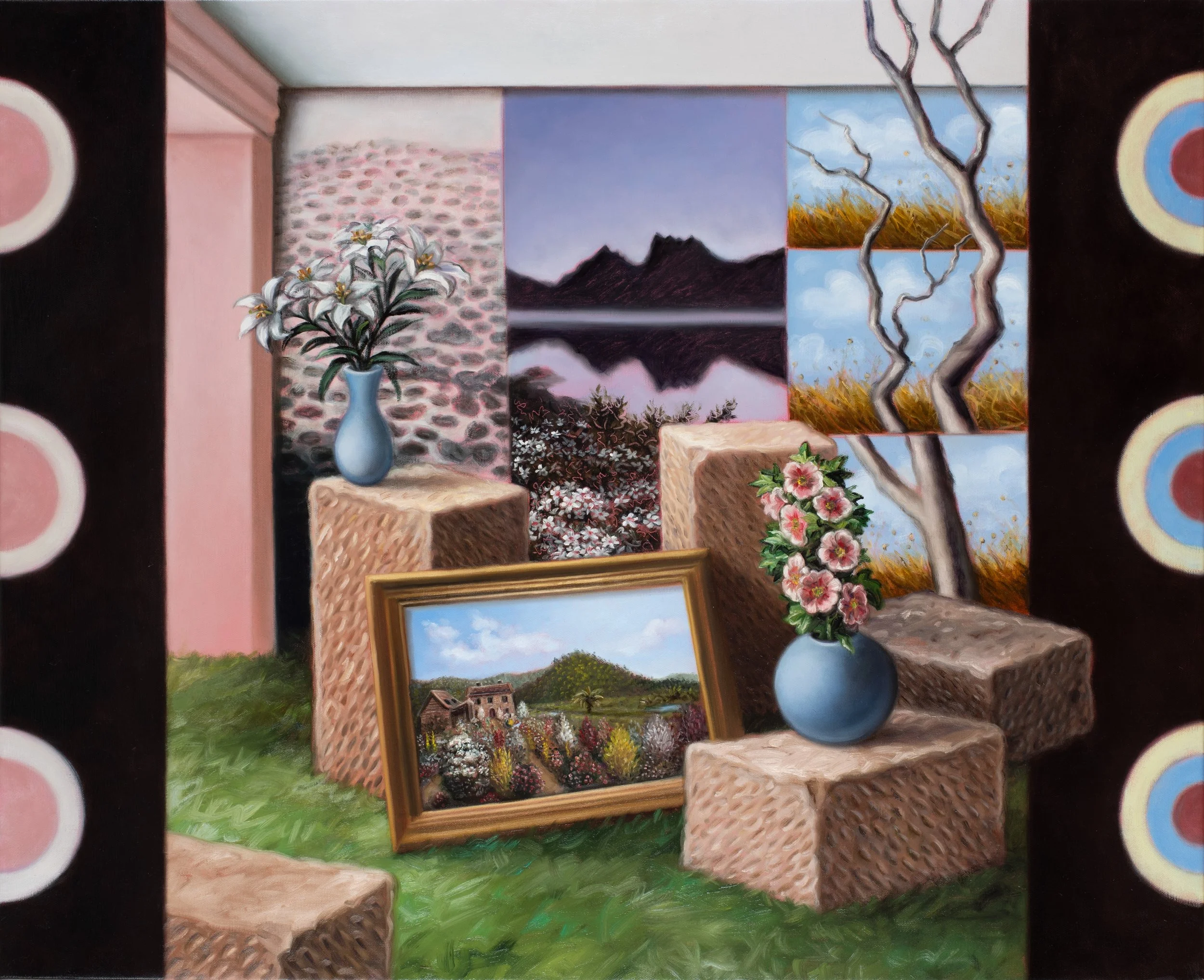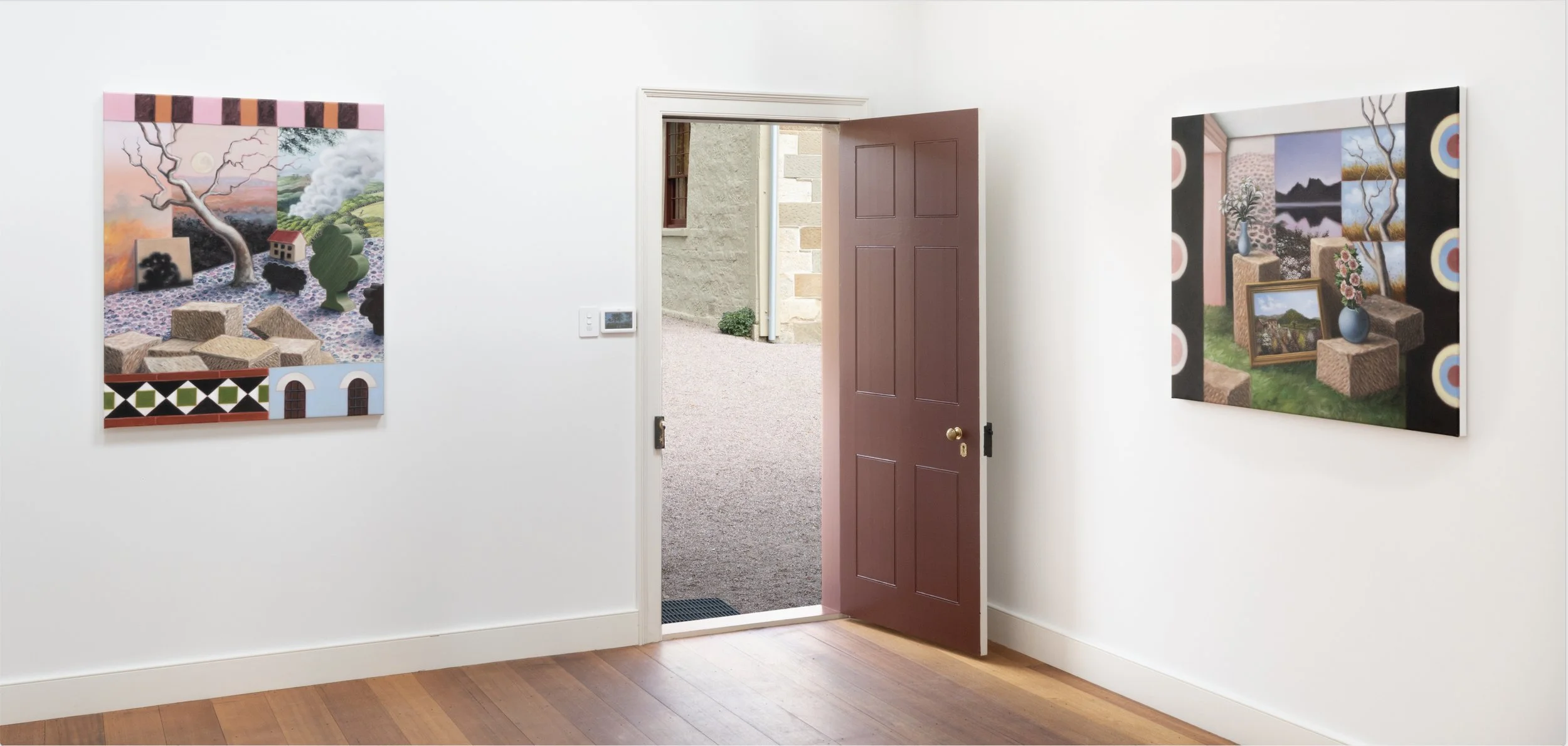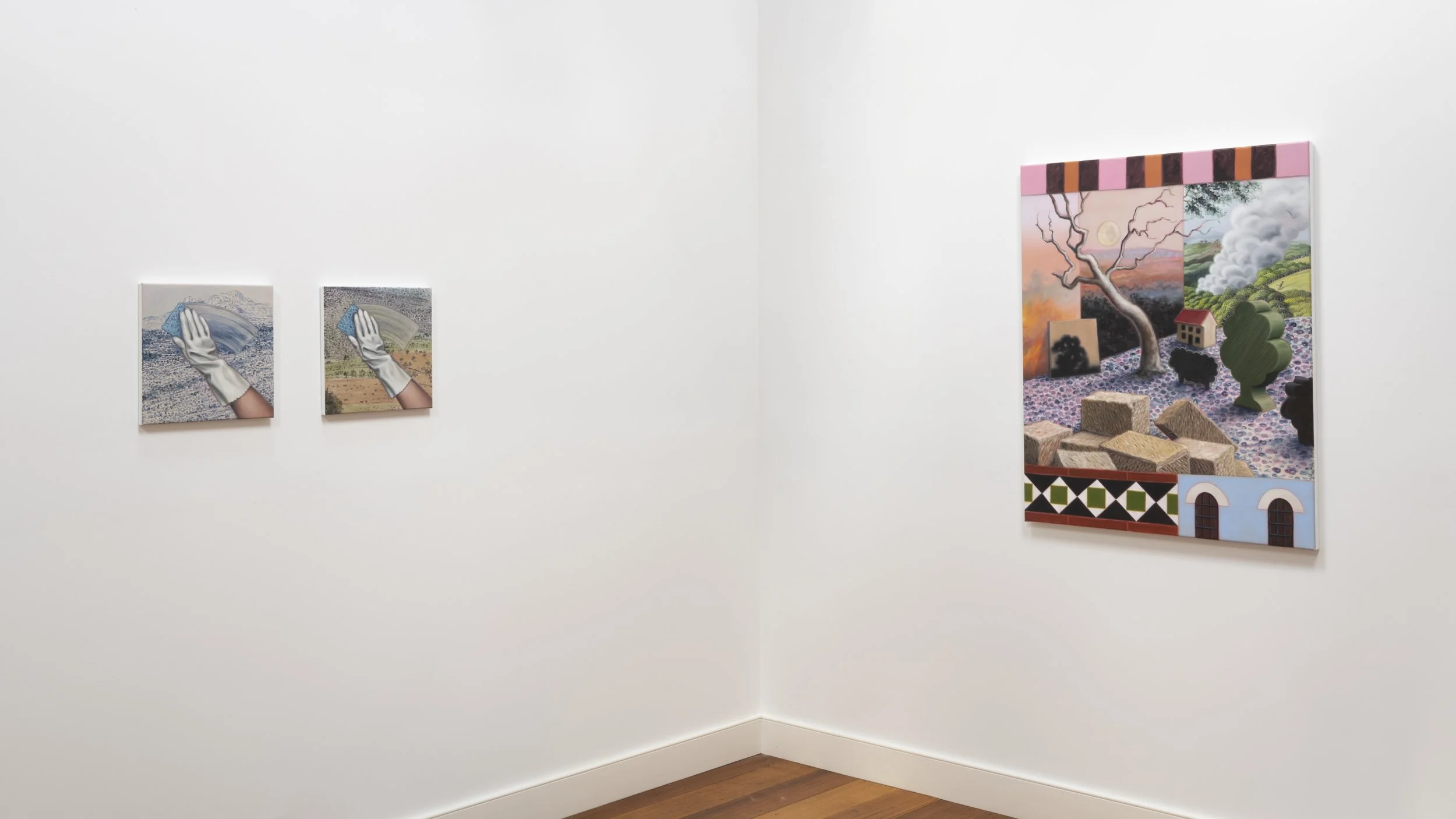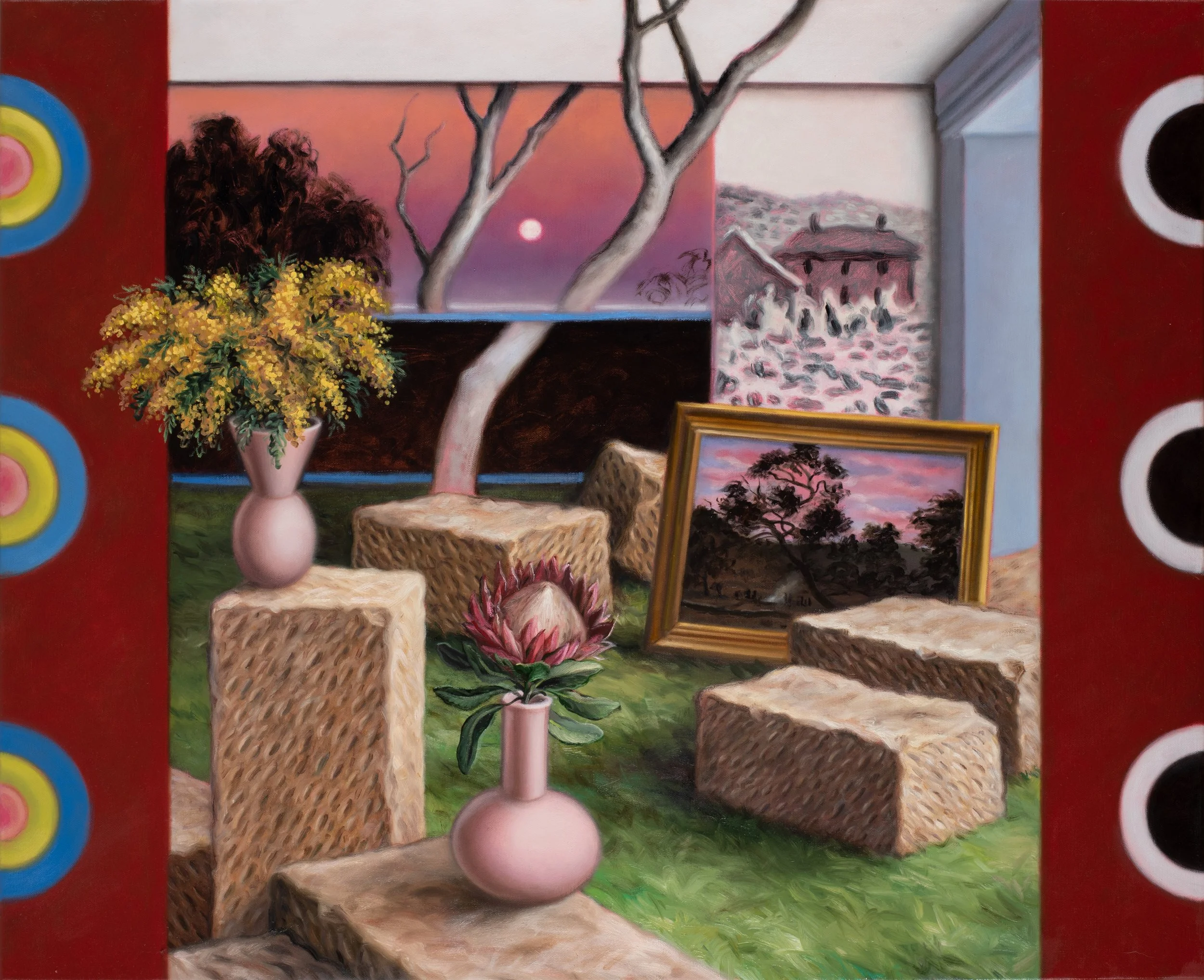Split Vision
Exhibition Room, Glover Country, Deddington
6 March – 2 May 2021
Split Vision, after John Glover and Hilma af Klint I, 2021, oil on linen, 91.5 x 112 cm
Painting Plains after John Glover, Philip Wolfhagen and Richard Wastell, 2021, oil on linen,112 x 91.5cm
Cultivation, after John Glover, Richard Wastell, Joseph Lycett and Matt Calvert, 2021, oil on linen,112 x 91.5 cm
Wash I, after John Glover (left) and White Wash II, after John Glover (right), 2021, oil on linen, panels 36 X 36 cm
Split Vision, after John Glover and Hilma af Klint II, 2021, oil on linen, 91.5 x 112 cm
Amongst Friends
Written by Toby Juliff, April 2021
Amongst the volumes of books and pamphlets bequeathed by John Glover that form part of Evandale collection is a particularly interesting and potent text by artist and colour theorist Mary Gartside. Entitled An Essay on a New Theory of Colours, Gartside managed to smuggle in radical ideas of colour and form into a modest booklet on watercolour instruction. Gartside’s amazing contribution to the study and practice of colour – such as the development of the colour ball that many painters now begin their studies with – has for some time been neglected, if now slowly rehabilitated.
It’s not known of course what Glover thought about Gartside’s radical rewriting of the laws of colour – to colour as ‘phenomenon’ – but its presence in the Evandale bequest suggests that, even if he didn’t endorse it, he was aware that colour is as much a phenomenon and experience as it is science of pigment.
Amber Koroluk-Stephenson Split Vision does, I think, pick up some of the challenges of colour outlined in Evandale. As Mary Gartside receded in the background, so their theories of saturation and the power of abstract colour would be appropriated and represented by later male writers whose lack of innovation would form the foreground of painting pedagogy for subsequent centuries. I don’t know if Amber has read Gartside, and I don’t know if that matters. Koroluk-Stephenson has, in Split Visions, another much neglected visionary colour theorist to hand in Hilma af Klint. Though af Klint would come later (born more than 50 years after Gartside’s publication) and form a more thorough, exacting and mystical approach to abstract colour, in Split Visions there does seems to be a turning point that Koroluk-Stephenson is occupying. A fork in the road; one eye in the rear view mirror of place and history.
There are juxtapositions here. And the contrasts between ‘phenomena as landscape’ and ‘phenomena as colour’ that separates Glover and af Klint are occupied as a poetic occupancy. Friezes of abstract wheels frame studies in the landscape of lutruwita/Tasmania. Foreground and background collide and spill out, their borders are porous. The vase pierces the abstract frieze, reminding us that what is in front, what is in the middle, and what is behind us, is an illusion.
The likeness of Glover meets new friends and contemporaries, partners in the landscape. Split Visions invites others into the conversation of course, and Koroluk-Stephenson hosts abstract sheep (Matt Calvert), experiences of granite and field (Richard Wastell), and the atmospheres of immutable landscape (Philip Wolfhagen). These partners, these friends (and yes, that means Glover and af Klint too) join objects of study – the still life, the palatte, the colour wheel – as the instruments of the past and future ‘Tasmania’.
One of Gartside’s great contributions to colour theory was the establishment of white as a colour of seriousness and significance: “The true primitive colour of light, unmixed with any other substance, is white. I shall therefore speak of this colour first.” It is the basis of everything. Koroluk-Stephenson’s White Wash I, after John Glover and White Wash II, after John Glover tell us as much. The is a powerful gesture in ‘white washing’, one that has politics and culture behind it, but also a powerful reminder of the redemptive possibility that white can offer us. Koroluk-Stephenson’s achievement in Split Vision is to occupy that dangerous space between lightness and darkness, between abstract saturations of colour and atmospheres of landscape, and the past and present. That it places that dangerous and illuminating occupancy as a place of poetic vibrancy reminds us that the path ahead is all the better for the company of friends.
Dr. Toby Juliff is Lecturer in Art in the School of Creative Arts and Media at the University of Tasmania
This project has been supported by the Commonwealth of Australia through an Australian Government Research Training Program and Arts Tasmania by the Minister for the Arts
Installation photographs by Angela Casey
Work documented by Jack Bett







